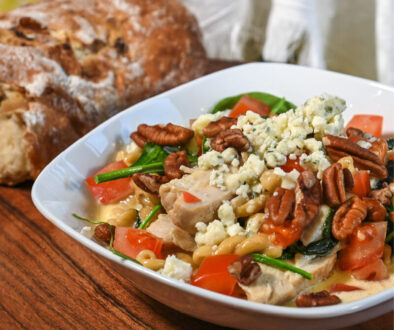Legalize Marinara: Pairing Pasta Shapes and Sauces
“Life is a combination of magic and pasta.”
Federico Fellini
The journey of grains of wheat to a bowl of pasta is one of the great mysteries of this world. In the modern culinary universe, an abundance of unique and exotic ingredients is easily accessible and promotes creativity for the modern chef, but the true vision came from our ancestors. To think, some ancient cook gazed upon a field of wheat and from that came bread, cakes, beer, and noodles. Today we gaze into a loaded refrigerator or pantry and can find nothing to eat.
Some variants of the noodle go back 4,000 years or more. Noodles have been found in far East Asian sites, the Middle East, and in the Etruscan communities of what is modern day Italy; it predates Marco Polo’s visits to the courts of Chinese emperors.

The advent of noodles in multiple cultures is most likely due to its simplicity to make, minimal ingredients, low cost, and their heartiness and versatility. Basic noodles are flour and water, essentially unleavened bread, kneaded into a dough, cut, or shaped then boiled. Over the centuries the techniques and ingredients have been slightly modified and enhanced but they would still be recognizable to our ancestors. Boiled unleavened bread dough was probably a hard sell even in the iron and bronze ages. While in general most people designate necessity as the mother of invention in the kitchen, blandness or boredom are the progenitors of creativity. Noodle flavor neutrality thus begged the innovation of both the sauce and the add-ins. They work by themselves or in soups and stews.
There really is no right or wrong sauce for pasta; if you like it, eat it. Understanding the different properties and textures of noodles will help you create more satisfying results. Angel hair or capellini pasta are thin delicate strands, and a thinner sauce will not overwhelm the pasta. In my view a good noodle dish is not just a vehicle for a sauce, but rather a harmonious pairing that allows both to be recognizable but which the whole is greater than the sum of its parts.
Side note: as I write this, I hear some voices screaming that it’s gravy, not sauce. This is a very regional and silly food debate. We excel with that in the Garden State; see pork roll vs. Taylor ham if you don’t believe me. What you call it reflects more on geography and familial traditions than right or wrong.
I tend to like thick hearty noodles like bucatini, cavatelli, and Japanese udon noodles. Yet as soon as I write that, I envision a plate of tender pappardelle with a wild mushroom ragout and shards of salty Parmesan Reggiano, or delicate angel hair laced with garlic, olive oil, and wilted arugula. That is probably why noodles have existed for thousands of years: versatility and the ability to adapt to new trends and ingredients. What we think of as common spaghetti and red sauce would be foreign to Marco Polo and his contemporaries. Pasta has existed in Italy for two millennia, while tomatoes weren’t introduced to Europe until the end of the 15th century. A pierogi is essentially a potato ravioli, a wonton, a variant on tortellini. There is a universal appeal to noodles, as they are filling for the diner and a creative open canvas for the chef.
This issue, try Angel Hair with Goat Cheese and Asparagus, Pasta e Fagioli, Pappardelle with Mushroom Ragout, Salmon lo Mein, and Gemelli Pasta with Spinach Gorgonzola Cream and Roasted Chicken.
Recipes from this issue








